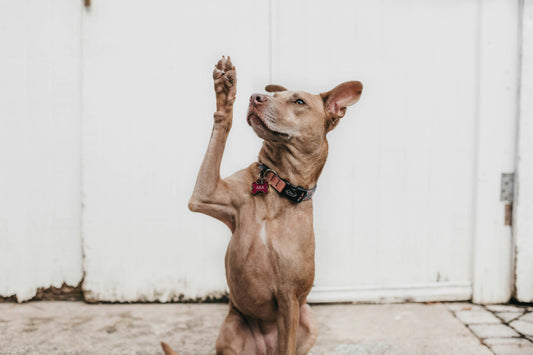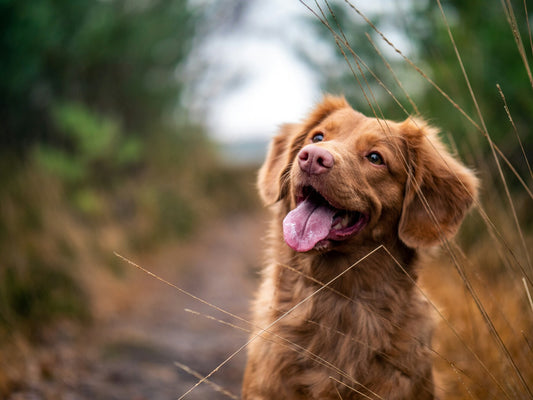Common Dog Paw Problems and How to Treat Them

Dogs rely on their paws for various activities, such as walking, running, and playing. However, their paws are not immune to problems. Common paw problems can arise due to environmental factors, diet, or genetic predispositions. It is essential for you to pay attention to your dog’s paw health to ensure their overall well-being.
Healthy paws are crucial for a dog’s comfort and mobility. Paw pads act as shock absorbers, provide traction, and assist with balance, slowing down, and stopping. Despite their durability, dog paws can still experience issues that can cause pain and discomfort. Regular inspection of the paws is necessary to identify any problems and take appropriate measures to keep them healthy and safe.
Key Takeaways
- Common paw problems can cause discomfort and pain for dogs, but with proper care, they can be treated effectively.
- Healthy paws are essential for a dog’s overall well-being, as they provide balance, traction, and shock absorption.
- You can maintain your dog’s paw health by regularly checking for any problems and taking necessary steps to prevent and treat common paw issues.
- Proper grooming, regular cleaning, moisturizing, skin health supplements and early detection are key to preventing and managing paw problems.
- Home remedies are often enough to treat most paw issues, but in some cases, veterinary help may be necessary for more serious conditions.
Understanding Your Dog’s Paw Health
Understanding your dog’s paw health is essential for providing the best care and maintaining their overall well-being. By learning about the anatomy of a dog’s paw and being aware of signs of unhealthy paws, you can effectively monitor your dog’s paw health and take appropriate measures to prevent and treat common paw problems.
The Anatomy of a Dog’s Paw
A dog’s paw consists of several parts that contribute to its functionality and health. These include the paw pad, which acts as a shock absorber and provides traction, the nails, which aid in gripping and scratching, and the structure of the dog’s feet, which allows for flexibility and stability. Understanding the anatomy of a dog’s paw can help you identify any abnormalities or potential problems. Regular paw checks and veterinary examinations can ensure that any issues are detected early and appropriate care is provided.
Signs of Unhealthy Paws to Watch For
There are several signs of unhealthy paws you should watch out for. These include hair loss, excessive licking or chewing of the paws, redness and swelling. Hair loss on the paws can indicate underlying issues such as allergies or infections. Excessive licking or chewing can be a sign of discomfort or irritation. If any of these signs are observed, pet owners should consult a veterinarian for a thorough examination and appropriate treatment.
Top 8 Dog Paw Problems and How to Solve Them
Dogs can experience a range of paw problems, from cracked and dry paw pads to infections and parasites. It is essential to be familiar with these issues and their solutions to provide the best care.
1. Cracked or Dry Paw Pads
Cracked or dry paw pads are a common occurrence in dogs and can be caused by various factors such as exposure to rough surfaces, hot pavement, cold weather, dry air, chemicals, and excessive licking. To treat cracked or dry paw pads, pet owners can use paw balms or moisturizers specifically designed for dogs.
Regular application of these products can help hydrate and protect the paw pads, preventing further damage and discomfort. Additionally, you should avoid walking their dogs on hot pavement or rough surfaces to prevent the recurrence of cracked or dry paw pads.
2. Cuts and Abrasions on Paws
Dogs are active animals and can easily get cuts and abrasions on their paws while running and playing. These injuries can be caused by sharp objects on the ground or rough terrains. It is crucial for you to be vigilant and take precautions to prevent such injuries. In case of cuts or abrasions, here’s what you should do:
- Clean the affected area with mild soap and water.
- Gently remove any debris or foreign objects from the wound.
- Apply an antiseptic ointment to prevent infection.
- Bandage the paw if necessary and keep it clean and dry.
- Monitor the wound for signs of infection, such as redness, swelling, or discharge.
- Seek veterinary attention if the wound is deep or does not heal within a few days.
3. Dog Paw Infection
Dog paw infections can occur due to various bacteria and fungi that naturally reside on the paw pads. However, these microorganisms can sometimes overgrow and cause infections. Common signs of paw infections include itching, redness, swelling, and oily discharge.
To treat paw infections, you should consult a veterinarian who may prescribe antibiotics or antifungal medications. It is also important to prevent the dog from licking the infected area excessively, as this can worsen the infection. Regular cleaning and proper hygiene practices can help prevent paw infections and promote paw health.
4. Parasites Affecting Dog Paws
Parasites such as mites can cause various problems in a dog’s paws, including itching, scaling, hair loss, and swelling. To detect and treat mite infestations, a veterinarian may need to conduct tests and prescribe appropriate medications.
It is important to regularly check their paws for any signs of parasites and seek veterinary assistance if necessary. Additionally, preventive measures such as regular grooming, keeping the living environment clean, and using appropriate parasite control products can help reduce the risk of infestations and maintain paw health.
5. Allergic Reactions on Paws
Just like humans, dogs can also have allergies that can manifest as reactions on their paws. Common allergens include certain foods, pollen, dust mites, and other environmental factors. Allergic reactions on the paws can cause excessive licking, biting, and chewing, leading to further irritation and swelling.
Try to identify and avoid the allergens that trigger their dog’s allergic reactions. In some cases, veterinary assistance may be necessary to diagnose and treat the allergies. Providing a balanced and appropriate diet, regular grooming, and minimizing exposure to potential allergens can help manage allergic reactions and promote paw health.
6. Blisters and Burns on Dog Paws
Blisters and burns on dog paws can occur when dogs walk on hot surfaces such as hot pavement or sandy beaches. These burns can result in swollen, red, or blistering paw pads. It is important to be aware of the temperature of the ground before allowing your dog to walk on it. If the pavement is too hot for a person to comfortably press their palm to it for 10 seconds or longer, it is too hot for a dog’s paws. .
7. Nail Problems in Dogs
Nail problems are common in dogs and can cause pain and discomfort. Long nails can become ingrown, leading to pain and potential infections. You should regularly trim your dog’s nails to prevent these issues. If a nail becomes torn or fractured, it can be extremely painful and may require veterinary attention.
Proper nail trimming techniques and regular grooming can help prevent nail problems and maintain paw health. You should also be cautious when trimming your dog’s nails to avoid cutting too close to the quick, which can cause bleeding. If in doubt, it is best to seek professional grooming assistance.
8. Foreign Objects in Dog Paws
Dogs can easily pick up foreign objects in their paws while exploring their environment. These objects, such as small rocks, sticks, burrs, broken glass, or debris, can cause discomfort, pain, and potential infections. If a foreign object is visible and easily removable, you can use tweezers or other suitable tools to gently remove it. However, if the object is deeply embedded or causing severe pain, it is best to seek veterinary assistance.
Preventing Dog Paw Problems
Preventing dog paw problems is essential for maintaining paw health and overall well-being. By following simple preventive measures, you can minimize the risk of common paw problems and promote healthy paws.
Regular Cleaning and Moisturizing
Regular cleaning and moisturizing can help prevent injuries and promote paw health. You should gently clean your dog’s paws after outdoor activities, paying attention to any cuts, abrasions, or foreign objects. Warm water and mild soap can be used to clean the paws. After cleaning, it is important to thoroughly dry the paws to prevent moisture buildup. Applying a dog-specific moisturizer or paw balm can help keep the paw pads hydrated and protected.
Monitoring and Early Detection
Regular monitoring of dog paws is crucial for early detection of any problems. Pet owners should routinely check their dog’s paws for any signs of redness, swelling, cuts, abrasions, or foreign objects. Early detection allows for timely intervention and prevents the condition from worsening. If any abnormalities are noticed, pet owners should seek veterinary assistance. By being vigilant and proactive in paw care, pet owners are doing a great job in ensuring their furry friends have healthy and happy paws.
Skin Health Supplements
To help support paw health, supplements like Bando’s Skin Health formula containing fish oil and biotin can be a great addition to your dog’s health regimen. These ingredients are proven to impact skin and coat health and also have anti-inflammatory benefits.
Book a Consultation with our Team for More Help
If you’re facing persistent issues with your dog’s paws despite trying various remedies, it might be time to seek professional advice. Our team of experts can provide solutions for a range of dog paw problems, including infections, injuries, and allergies. Book a consultation today and we’ll put together a plan to get your dog’s paws healthy.
Frequently Asked Questions
How Often Should I Check My Dog’s Paws?
You should check your dog’s paws regularly for any signs of problems. It is recommended to inspect the paws at least once a week or more frequently if the dog is prone to paw issues. Regular checks allow for early detection of any abnormalities and prompt intervention to maintain healthy paws.
Can Diet Affect the Health of My Dog’s Paws?
Yes, diet can affect the health of a dog’s paws. Food allergies or sensitivities can manifest as paw problems, such as itching, redness, or swelling. Providing a balanced and appropriate diet can help maintain paw health and prevent common paw issues. Consultation with a veterinarian or pet nutritionist can help identify any dietary concerns and ensure the best care for a dog’s overall health, including their paws.






